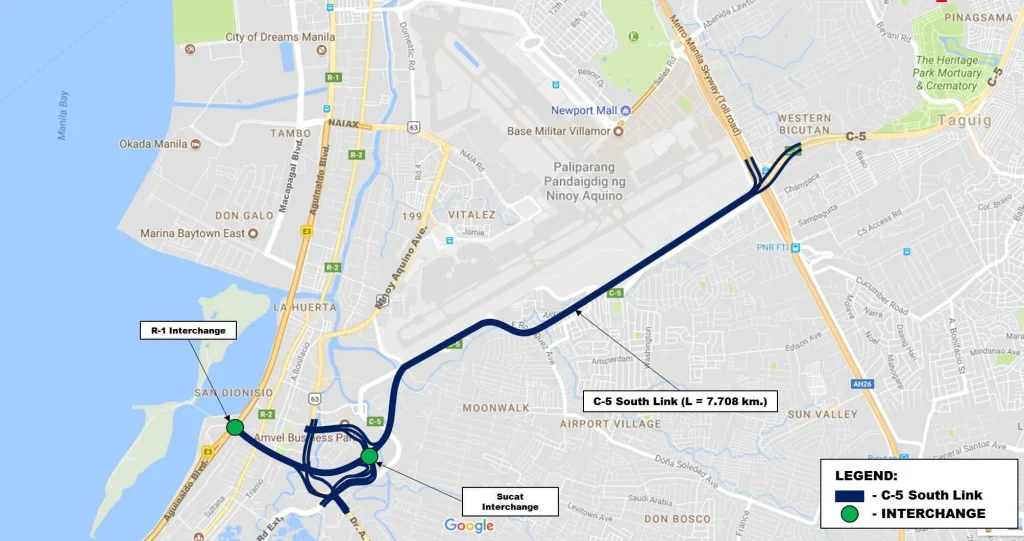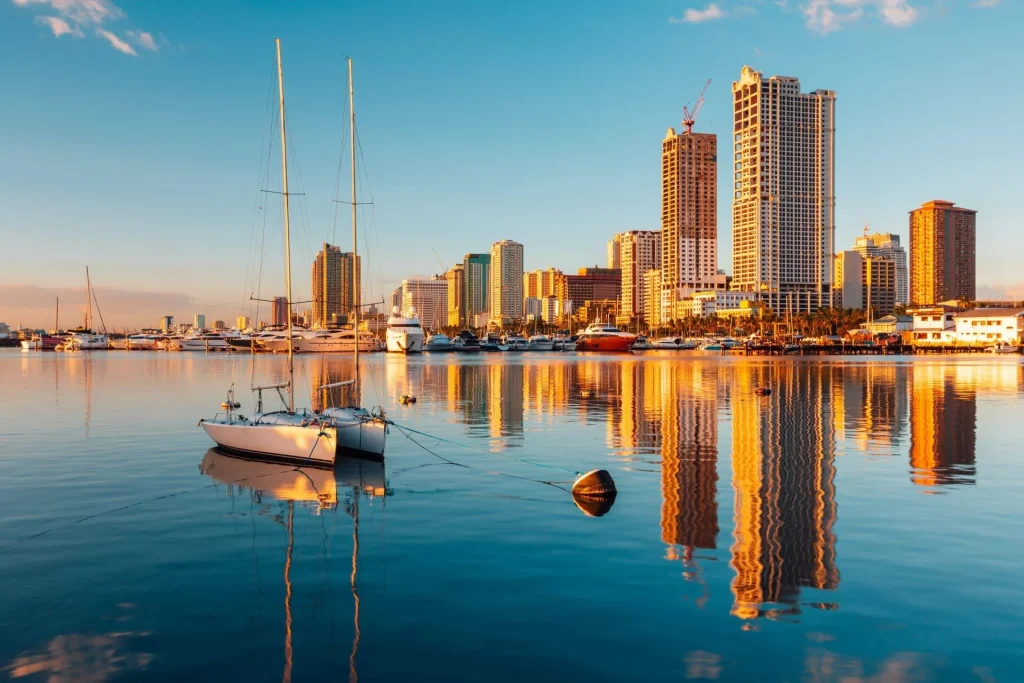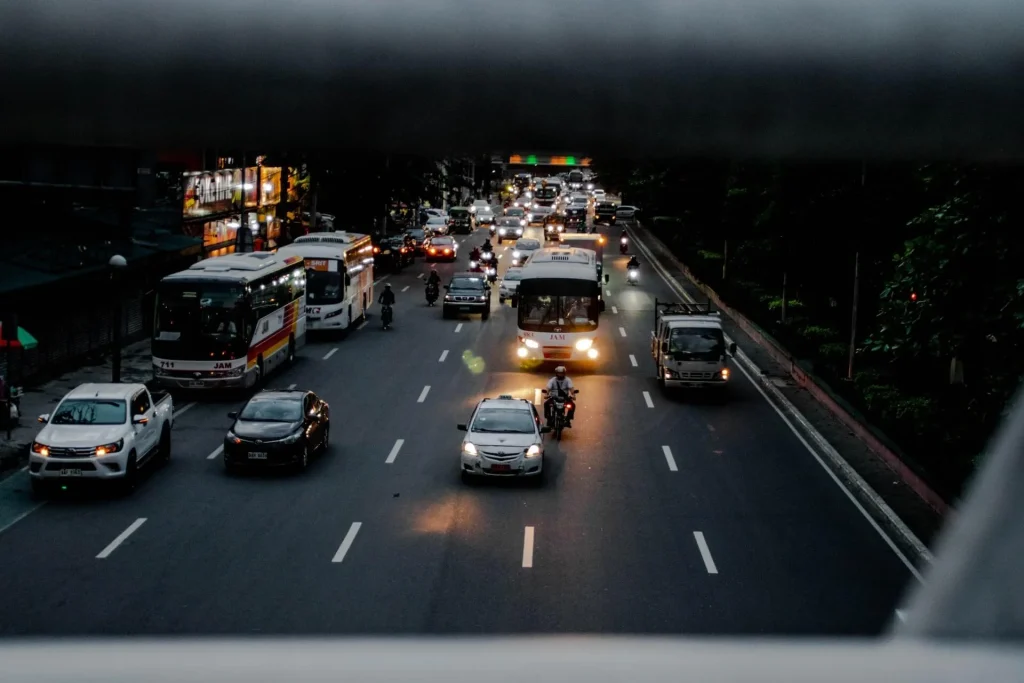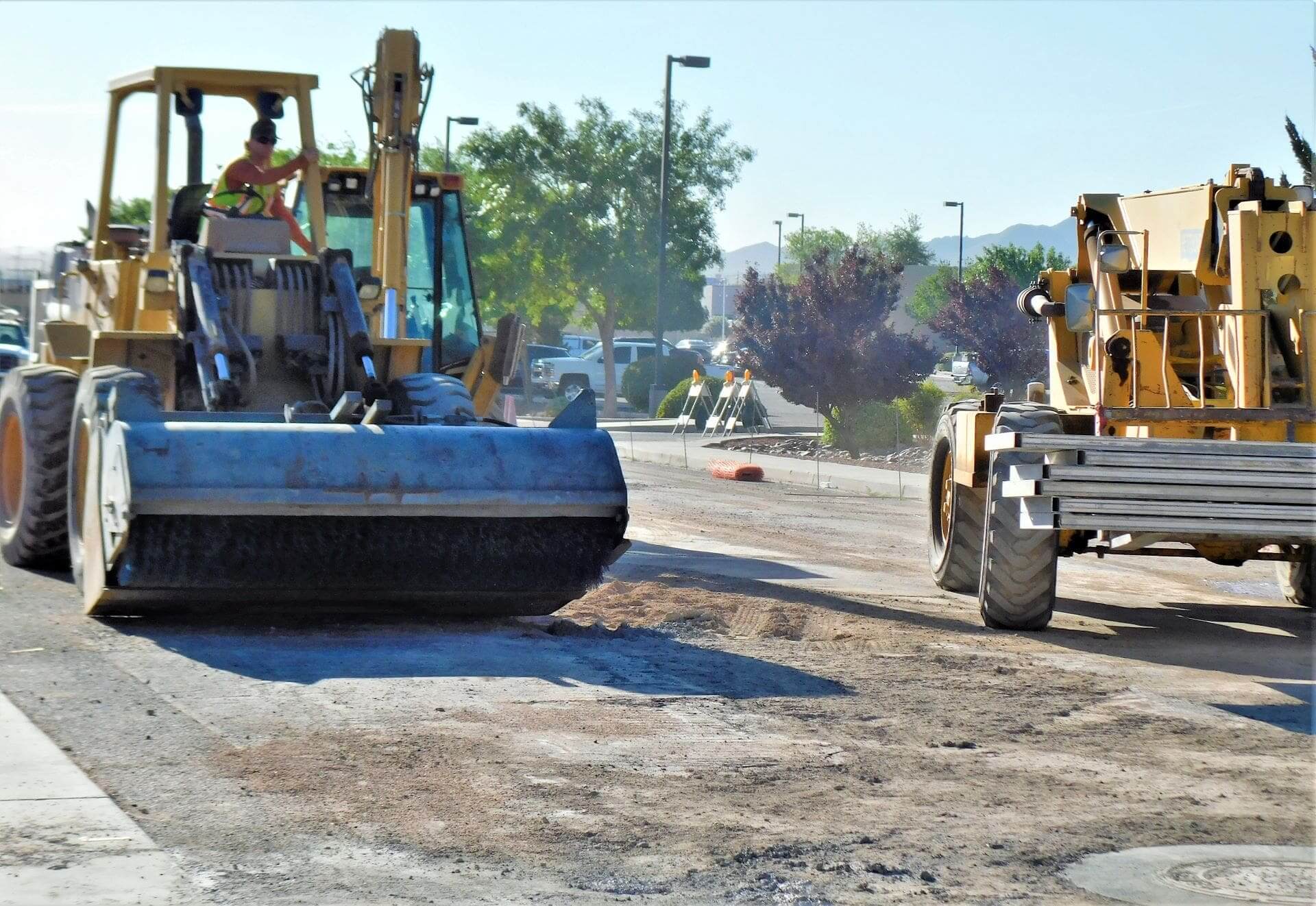The CAVITEX C5 Link, a new road system connecting Cavite and Taguig City, offers a promising solution for Filipino commuters in Metro Manila. The project aims to improve everyday commutes by reducing travel times, enhancing connectivity, promoting economic growth, and reducing traffic congestion. The C5 Link shortens travel times, making it easier and more efficient for commuters. It also contributes to the Philippine economy by providing an alternate route for commuters, easing congestion and bottlenecks in the area. The market for house and lot developments, especially those provided by businesses like Crown Asia, may benefit in a number of ways from improvements in the infrastructure connecting Cavite and Taguig, such as the completion of projects like the CAVITEX C5 Link.
Long commutes in the Philippines often lead to sacrifices for commuters, affecting work-life balance, family bonds, accessibility, and mental health. Long commutes can strain family bonds and prevent quality time with loved ones. Heavy traffic can also hinder access to necessary services and mobility, making it difficult to respond to medical crises or attend school. The time spent traveling can lower productivity and quality of life, affecting mental health.
Manila, the capital of the Philippines, is a popular destination for job seekers due to its vibrant cityscape and diverse job opportunities. The aspirations of Manila go beyond simple geographic ones; it represent the quest for prosperity in business, education, culture, and the world at large. Manila is more than simply a city to many Filipino laborers; it is the realization of dreams and the hope for a better future. The CAVITEX C5 Link project aims to improve the connection between Cavite and Taguig, simplifying daily commutes. The Manila Cavite toll is set to open in the first quarter of 2024, and the project has made significant progress, with a direct connection between CAVITEX R-1 and Sucat Road, taking 10 minutes less to travel between the two routes.

Photo from dpwh.gov.ph
Filipino Commuters’ Constant Challenge With Transportation
In the Philippines, particularly in major urban areas like Metro Manila, heavy traffic is a well-known and ongoing problem that significantly affects commuters’ everyday life. Getting around in the constant swarm of moving traffic presents a variety of difficulties that put the tolerance, time, and health of those who depend on everyday transit to the test.
Commuting is one of the challenges faced by many Filipino commuters and travelers until now. Many workers from provincial regions are striving for job opportunities in the capital of the Philippines, Manila. However, even though accommodation or living near the office is an option for faster travel and convenience, the expenses can be overwhelming. Hence, many still choose to travel back and forth from the office in Manila to their houses in Cavite. The travel time from Cavite to Taguig is approximately 2 to 4 hours depending on the traffic and time.
The major sacrifice that commuters face is the time allotted for traveling. Instead of doing something else like spending time with families, doing their hobbies, or even watching entertainment sources to unwind, the travel hours take a major toll on work-life balance.
Struggle in the Family
Long commutes in the Philippines mean that commuters spend less time at home with their family. In particular at significant life events and milestones, this strains family bonds and prevents people from spending quality time with loved ones.
Accessibility issues and limited mobility
Access to necessary services and mobility may be hampered by heavy traffic. For instance, road congestion makes it harder to respond to medical crises. Even getting to school might be difficult, especially in busy urban regions.
Time Spent Traveling
The precious time lost in traffic is one of the commuters’ most pressing and essential issues. Long periods of time spent slowly moving through traffic bottlenecks significantly lower productivity and quality of life. This is time that could have been spent more productively at work, with family, or on personal hobbies.
Impact of Stress on Mental Health
The mental health of commuters suffers as a result of heavy traffic. Stress, anxiety, and even road rage can develop as a result of continual exposure to noise, pollution, and the aggravation of being trapped in traffic. Commuters frequently start their days stressed out by the arduous journey, which has an impact on their general well-being.
Risks to physical health
Long-term traffic exposure, especially in places with high pollution levels, can be harmful to commuters’ physical health. Long durations of sedentary driving combined with filthy air can cause respiratory problems, cardiovascular problems, and even weight gain.
Why Many Filipino Workers Want to Work in the Capital: The Dream of Manila
This article also aims on why many Filipino workers are aiming to attain job opportunities in Manila. Discussing such questions could also provide clarity on their choice to commute long hours.

People from all across the regions have long traveled to Manila, the capital of the Philippines. Manila’s attractiveness stems from more than simply its vivid cityscape and extensive history; it also stems from the numerous chances it offers. Filipinos from all regions have migrated to the capital for decades in quest of better employment opportunities and the ability to realize their aspirations.
Manila, the bustling capital of the Philippines, has long been a beacon for job seekers from across the island. The city’s magnetic attraction extends beyond its towering buildings and colorful streets, luring in a myriad of Filipinos eager to pursue job possibilities and carve out a brighter future for themselves
Manila stands as the economic lifeblood of the Philippines, supporting a myriad of businesses ranging from banking and technology to manufacturing and services. The city’s healthy economy provides a varied assortment of job opportunities, making it a desirable place for persons seeking employment and career progression. With international enterprises and successful local businesses focused in Manila, job seekers find themselves at the hub of economic activity.
Manila’s role as the capital city ensures that it functions as a networking hub for professionals. The concentration of enterprises, government agencies, and international organizations gives numerous chances for networking and collaboration. Building a robust professional network is generally vital for career growth, and Manila provides a climate conducive to making valuable contacts.
Manila has undergone considerable advancements in terms of quality of life. The city’s dedication to sustainable urban growth, coupled with initiatives to expand public spaces and services, has made it a more living and enjoyable location for inhabitants. This, in turn, draws individuals looking for a balanced and happy lifestyle.
What Is the Cavitex C5 Link Segment?
Luckily, the development of the CAVITEX C5 link is a major relief for Filipino travelers as the purpose of this infrastructure is to reduce the transportation dilemma. The Manila Cavite toll expressway is set to open in the beginning quarter of 2024.
The CAVITEX C5 Link project is a key road infrastructure development in the Philippines that seeks to improve the connection between Cavite and Taguig, thereby simplifying inhabitants’ everyday commutes to work.
CAVITEX C5 Link is expected to open sometime in the first quarter of 2024. The CAVITEX C5 Link is making steady development, which is positive. After the girder was successfully installed close to the Paranaque Toll Plaza, another construction milestone was reached. a significant accomplishment, as it was finished much earlier than expected.
A direct connection between CAVITEX R-1 (Coastal Road) and Sucat Road (also in Paranaque) has been made with the completion of the girder installation in the vicinity of the Paranaque Toll Plaza. Once the project is finished, it will take 10 minutes less to travel between the two routes.
The R-1 Interchange (Segment 2), a crucial section of the CAVITEX C5 Link project, is 1.9 kilometers long. The 7.7-kilometer-long road will have three lanes on each side and travel in two directions. An estimated 50,000 drivers will be able to enjoy a smooth connection from CAVITEX R-1 to C5 Road in Taguig after the full project is finished.
A New Girder Connecting Coastal Road and Sucat Road Has Been Successfully Installed by CAVITEX Infrastructure Corp.
The Cavitex Infrastructure Corporation (CIC) revealed a few weeks ago that they would install girders at the CAVITEX C5 Link R-1 Interchange. The objective is to create a direct connection between Sucat Road in Paranaque City and CAVITEX R-1 (Coastal Road).
According to AutoIndustrya.com, the R-1 Interchange will play a crucial role in the larger CAVITEX C5 Link Project’s 1.9-km Segment 2 segment. The 7.7-km, 2×3-lane expressway would smoothly connect CAVITEX R-1 to C5 Road in Taguig and serve 50,000 drivers every day once it is finished.
More crucially, the CAVITEX C5 Link Expressway is expected to cut travel time to Makati, Pasay, and Taguig by 30 minutes. It is also anticipated to simultaneously reduce traffic on Sales Road and EDSA.
What Are the Benefits CAVITEX C5 Link Segment From Cavite to Taguig?
The daily grind of negotiating traffic for Filipino commuters in the busy metropolis of Metro Manila may be a difficult and time-consuming endeavor. However, the CAVITEX C5 Link, a brand-new road system that connects Cavite with Taguig City, has offered a ray of optimism. The everyday commute will be transformed by this infrastructure project, which will help persons who commute between these two regions in a variety of ways.
The CAVITEX C5 Link project is much more than just a road; it is a chance for Filipino commuters to live better lives. This infrastructure project aims to connect communities and change everyday commutes to work through reduced travel times, enhanced connection, economic growth, and traffic decongestion. It offers the possibility for a better and more accessible future for all while also resolving the issues caused by Metro Manila’s excessive traffic.

Faster and Reduced Travel Time
The CAVITEX C5 Link’s ability to shorten commuting times is one of its most important advantages. Prior to this project, the trip from Cavite to Taguig City might have been arduous and entailed spending a lot of time stuck in traffic. Commuters may now reach their destinations more quickly and with less stress thanks to the C5 Link, which has drastically reduced travel times. The road system efficiently reduces traffic and makes travel easier and more effective.
Positive Contribution to the Philippine Economy
Increased connectivity between Taguig City and Cavite benefits commuters and has considerable economic effects as well. A flourishing economy depends on the efficient transit of products, services, and people, which is made possible by the C5 Link. Businesses in Cavite may now more easily reach the busy markets of Taguig and Metro Manila, fostering trade and development. Additionally, this improved connectivity brings growth and investment to the area, opening up new chances for business owners and employment seekers.
Traffic Jam Reduction
In Metro Manila, traffic congestion is a constant problem that frequently seems insurmountable. The CAVITEX C5 Link gives commuters an alternate route, which helps to reduce traffic congestion. As more people take this route, it lessens the load on other crowded roads, easing congestion and bottlenecks in the neighborhood. This is a win-win situation because it helps both individuals who utilize the C5 Link and other nearby road users by easing traffic congestion.
Improved Accessibility and Mobility
Cavite and Taguig’s connectivity is enhanced by the C5 Link, but the entire region’s mobility and accessibility are also improved. The road network encourages citizens and businesses to investigate new opportunities and locations by offering a more convenient path. People in Taguig and other areas of Metro Manila can travel more easily into the scenic areas of Cavite, while people in Cavite have greater access to Taguig’s employment hubs. This greater mobility broadens perspectives and promotes a feeling of community among nearby towns.
Impact on the Environment
Transportation and infrastructure improvements can also benefit the environment. The CAVITEX C5 Link supports carpooling and using public transit while encouraging a move away from single-occupancy automobiles. Congestion and idle time reductions lower air pollution while also saving fuel. Additionally, as traffic congestion decreases, the wear and tear on vehicles decreases, resulting in decreased carbon emissions and a broader reduction in the environmental impact.
Read more: CAVITEX: Connecting Cavite


